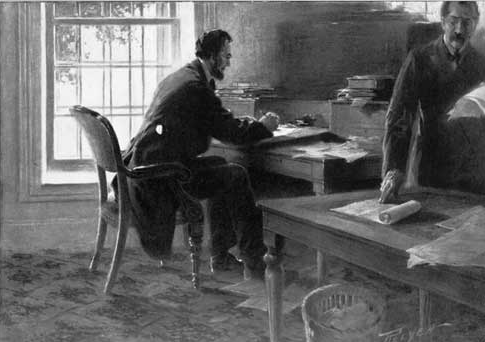Email, Tmail and Abraham Lincoln

When was the last time you sent an email with a typo or an emotional response and regretted it? Did you know Abraham Lincoln had a similar problem? According to Daniel Forrester in his book Consider; harnessing the power of reflective thinking in your organization, Daniel tells us about Abraham Lincoln’s communication habits and his electronic messaging practice (Forrester 2011 p38). It was Lincoln’s deliberate practice to communicate first in person, next in a carefully articulated speech or letter and as a last resort, if he had to communicate quickly; he reverted to Tmail (Telegraph messaging).
When running the war, the telegram was the quickest way to communicate and to collect data to analyze. Analyzing Lincoln’s thousands of telegraphs is one of the best ways to understand his immediate thinking. Even then, he was very careful to craft his message before it was sent. Most often, Lincoln would write out his message, reflect on it, cross out words, add new words in and sometimes he told the telegraph clerk not to send. Lincoln new that an emotional message sent off quickly in response to a situation can cause unnecessary tension on both sides. An example of this was when he wrote to General Burnsides for not supporting General Rosecrans while under attack at Chattanooga, Lincoln said, “it makes me doubt whether I am awake or dreaming.” He immediately reconsidered and wrote on the back of his draft, not sent.
We can learn from Lincoln, sometimes a message does not need to be sent. I like the rule, if you feel emotional about a situation, write out a response, but do not send for 24 hours and then review it one more time. I have found that often, I reword the message or do not send it at all. Maybe, writing down my response was a way for me to articulate how I felt at the moment and the message was very inappropriate to send to another person!
Good leadership takes time to think about and reflect on how best to communicate and how messages will be received and reacted to. We can learn from Lincoln and prioritize how best to communicate. I have adopted his approach:
- Communicate in person whenever possible, especially to communicate important information.
- Next, Skype or video conferencing allows people to see some body language.
- Phone is next as one can hear inflection and listen for immediate feedback.
- Email would be next but follow up in person to make sure messages were received correctly and not distorted. Written words need to be carefully thought out and crafted. We can learn from Abe here.
- Snail mail would be better than email as it shows consideration and time to write a note in long hand if one has the time to send.
- Texting works well for a quick short message. And refrain from texting while driving.
Have you taken time to think out your communication strategy? What are your priorities?
Forrester, Daniel Patrick. Consider: Harnessing the Power of Reflective Thinking in Your Organization. New York, New York: Palgrave Macmillan, 2011.
Leave a Reply
You must be logged in to post a comment.